For the past year, I’ve been tired. Exhausted, really. I’d sleep anywhere from 10-12 hours a night, but still walk around like a zombie all day and take frequent naps. I was miserable. But according to my doctors, nothing was wrong.
Vitamin D levels? Normal with my daily supplements. B6 and B12? Fine. Thyroid? Enlarged, but showing no signs of hyper or hypothyroidism. So why was I so exhausted all the time?
I talked with my GP, with my rheumatologist, and with my friends who have similar autoimmune issues. My GP wasn’t very concerned at all, but after six months of pushing she recommended I start on Wellbutrin, an antidepressant. Don’t get me wrong, I’ve had my fair share of depressive episodes, but this didn’t seem like one of them. I was exhausted, sure, but I didn’t feel sad or upset. Still, I started taking a low dose of the medication. It didn’t help.
 My rheumatologist seemed even less concerned. Fatigue is associated with some autoimmune disorders and can come as a side-effect of the Remicade treatments. I spoke with his PA Anna, and she mentioned that some patients have seen positive results after changing their diets. While she couldn’t medically recommend a specific diet, she did tell me that many patients she (and many of her colleagues) spoke with reported lessened inflammation with certain dietary restrictions: no gluten, no dairy, no alcohol, no refined sugar, etc. I’d tried some of this before to no avail, so I packed that discussion into the back of my mind.
My rheumatologist seemed even less concerned. Fatigue is associated with some autoimmune disorders and can come as a side-effect of the Remicade treatments. I spoke with his PA Anna, and she mentioned that some patients have seen positive results after changing their diets. While she couldn’t medically recommend a specific diet, she did tell me that many patients she (and many of her colleagues) spoke with reported lessened inflammation with certain dietary restrictions: no gluten, no dairy, no alcohol, no refined sugar, etc. I’d tried some of this before to no avail, so I packed that discussion into the back of my mind.
Taking my health into my own hands
When both doctors reported no signals for the fatigue in my bloodwork and seemed rather unconcerned with getting to the root of the problem quickly, I took matters into my own hands. Because of the Remicade treatments, my rheumatologist orders a full CBC (blood workup) every two months and posts the results online. These worksheets became my obsession.
First, I will say this: no matter what your Google search turns up, check with your doctors about their validity. My GP has had to talk me off many a well-intentioned ledge where I just knew I had figured out the cause of my fatigue. Never be afraid to ask questions, or to ask about your options. Remember: it’s your body. Your doctors are there to help and have a lot of knowledge, but they aren’t perfect. If they say something won’t work, politely ask why. If you aren’t satisfied with that answer, don’t be afraid to ask another doctor.
Keeping this in mind, I started my own research process. When the usual signals for fatigue were fine, my GP asked to see the bloodwork from my rheumatologist. I should note that I am currently in the process of switching GPs because my previous practitioner is changing her practice. I wasn’t able to see her again before the change and share my findings, but I had put together a year’s worth of CBC workup results. Looking through them, I could see clearly when my surgeries had taken place. The neutrophil and white blood cell count would shoot upwards immediately following the procedure, then settle back to a normal level before the next workup.
I also saw a recurring pattern: high MCV, low alkaline phosphatase. My first thoughts were, “What the hell is that?” and “Why haven’t we talked about this before?”
Maybe it’s B12 malabsorption
And so, I Googled… MCV stands for “mean corpuscular volume,” and the higher it is, the larger your red blood cells. This can indicate a condition called macrocytosis, or macrocytic anemia, which is often a sign of B12 deficiency. A vitamin B12 deficiency does point to my symptoms – fatigue, depression, brain fog – but consistently my bloodwork has shown normal B12 rates. However, normal B12 levels don’t necessarily account for your actual B12 absorption rate (and can often underestimate macrocytosis). Some sites recommend a methylmalonic acid test. Buildup of methylmalonic acid in the urine indicates that your body isn’t using B12 the way it’s supposed to.
In other words, the tests could be wrong, and there are better tests I can try.
Other relevant causes for the high MCV could be a folate deficiency (my levels are fine) or past chemotherapy treatment. I was on cyclophosphamide (a chemo drug) for more than a year, so that could be the cause. (Also, myelositic diseases, megaloblastic marrow, leukemia, liver disease, etc…)
My solution: I’ve made an appointment with a new GP. I plan to discuss the B12 testing process with her and start on a B12 supplement.
Maybe it’s hypothyroidism
Here’s another case where my CBC indicates normal thyroid function, so says my rheumatologist, but several sites indicate that there are better tests to determine hyper or hypothyroidism. Hypothyroidism is often linked to an autoimmune disorder, Hashimoto’s disease. It also runs in my family. The only major difference I see in the symptoms of hypothyroidism and my own are my high heart rate, lack of weight gain, and lack of a goiter (thank goodness!) Still, it’s probably worth checking out.
My solution: Talk with my new GP about better thyroid testing.
Maybe it’s alkaline phosphatase deficiency!
This one seems pretty obvious, considering my alkaline phosphatase levels have been consistently low for at least a year. Beyond fatigue, other relevant symptoms include cold intolerance (check) and rapid heart rate (double check), as well as shortness of breath, constipation, and extreme weight-loss. And guess what? It can also be caused by B12 deficiency and hypothyroidism – as well as aplastic anemia, anemia, and myelogenous leukemia. So far, my symptoms and CBC abnormalities seem related.
All of these – B12 malabsorption, hypothyroidism, and alkaline phosphatase deficiency – can be subsequently linked to malnutrition. In particular, the need to increase and regulate levels of vitamins A, C, B6, and B12, folic acid, and phosphorous.
My solution: Look at my normal diet and make some changes.
Maybe it’s my diet
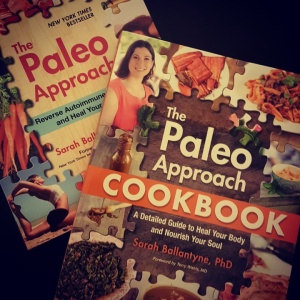 A few years ago, I ran into Christina, an acquaintance from high school, at the Five Points MARTA station. It was particularly surprising because Christina lives in Florida, we hadn’t spoken since I graduated ten years ago, and we were heading in the same direction. Talking with her on the train, I found out we had both been dealing with autoimmune disorders (me: rheumatoid arthritis, her: Hashimoto’s disease and narcolepsy), and we were both in graduate school for our doctoral degrees (me: political science, her: biomedical science with a focus on intestinal immunology).
A few years ago, I ran into Christina, an acquaintance from high school, at the Five Points MARTA station. It was particularly surprising because Christina lives in Florida, we hadn’t spoken since I graduated ten years ago, and we were heading in the same direction. Talking with her on the train, I found out we had both been dealing with autoimmune disorders (me: rheumatoid arthritis, her: Hashimoto’s disease and narcolepsy), and we were both in graduate school for our doctoral degrees (me: political science, her: biomedical science with a focus on intestinal immunology).
Basically, she’s a badass, and you should check out her page!
I’m not one to believe that “things happen for a reason,” but I was glad to have had this conversation with Christina. Really, I wish I’d paid more attention and started my research on intestinal health back then, but grad students will be grad students… She shared her research on the link between autoimmune disorders and “leaky gut” – where your intestinal wall is too permeable and lets particles seep out into your body. Most of the current treatments for autoimmune disorders focus on inflammation and the overactive immune system. New research, like that of Christina and other scientists like Dr. Sarah Ballantyne, focuses instead on intestinal health. In other words, they are trying to treat the potential cause, rather than just stifle the symptoms.
When intestinal health kept popping up in my searches, I contacted Christina again for advice on where to start. She again mentioned the benefits of the paleo diet. If you haven’t heard the specifics yet, the essential idea behind the paleo diet is that our bodies haven’t adapted to many of the foods we regularly eat today. Proponents of paleo eat mainly meats and non-starchy vegetables, shying away from processed foods, sugar, and grain. The stricter autoimmune protocol refines this diet even more, acting as an elimination diet. For the first month, participants will avoid all grains, processed sugar, all nightshades, starches, alcohol, dairy products, and eggs. The will increase consumption of seafood, organ meats, and fermented foods and limit fruit intake. After “resetting” their system, participants slowly reintroduce foods to find out which are triggering an abnormal autoimmune response.
My solution: Try something new.
Going Paleo
For someone who spent 5 years as a vegan and generally tries to eat very little meat, going paleo sounded like a nightmare. Not only would I be giving up some of my favorite things (Ice cream! Baking!), I would be forcing myself to shovel down meat at every meal (very expensive, considering I only buy products from humanely treated animals). However, the exact months I went vegan in 2007 were the same months I started noticing joint pain, which quickly blossomed into a full-fledged flare. It’s also something I had never tried before, and I do rather enjoy seafood. So I decided to give it a try.
 Whether or not you buy into the explanation of ancestral nutrition, the paleo diet does include much higher levels of the nutrients I may be deficient in (A, C, B6, B12, folic acid, healthy fats, and phosphorous). I started the autoimmune protocol (AIP) diet on July 15, 2015. On August 3, my alkaline phosphatase levels were already in the normal range, but my MCV was still high. By August 10, I had noticed significant improvement in my daily routine. Slight joint stiffness still made going to sleep a bit difficult, but when my alarm went off in the morning I was actually awake. Now I can get out of bed in the morning, rather than lying there another hour and a half trying to force myself to function. In the past few days, I’ve noticed the brain fog lifting, and naps don’t seem like such a necessity. The one time I caved and ate rice, my left knee screamed for three days!
Whether or not you buy into the explanation of ancestral nutrition, the paleo diet does include much higher levels of the nutrients I may be deficient in (A, C, B6, B12, folic acid, healthy fats, and phosphorous). I started the autoimmune protocol (AIP) diet on July 15, 2015. On August 3, my alkaline phosphatase levels were already in the normal range, but my MCV was still high. By August 10, I had noticed significant improvement in my daily routine. Slight joint stiffness still made going to sleep a bit difficult, but when my alarm went off in the morning I was actually awake. Now I can get out of bed in the morning, rather than lying there another hour and a half trying to force myself to function. In the past few days, I’ve noticed the brain fog lifting, and naps don’t seem like such a necessity. The one time I caved and ate rice, my left knee screamed for three days!
I’m not saying paleo is the exact and only reason for the improvements I’ve seen. I’m certainly not recommending it as a one-size-fits-all “cure” for RA. I am merely sharing my own story from my own path. I cannot stress enough that everyone’s body is different and no one should change their diet drastically without fully understanding how to get the right nutrition from the new diet plan.
Remember: it’s your body, take care of it!


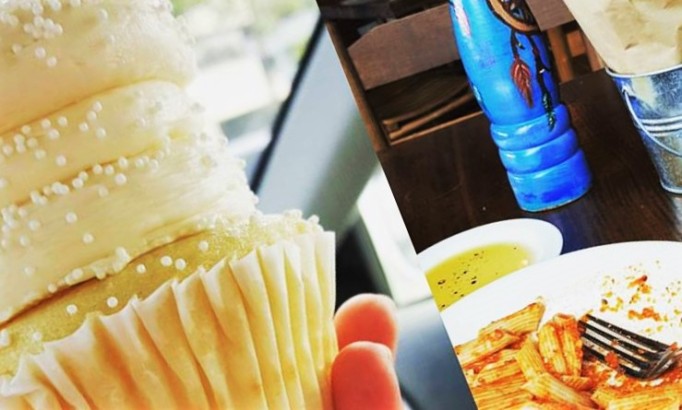
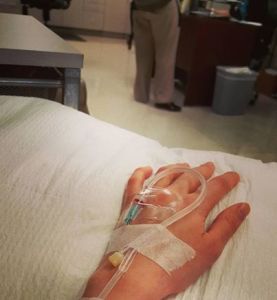 Now and again, there comes a time when we just need to take a breather and hit the reset button on life. Frustrations mount, stresses build, and complications twist everything into a knotted, tangled mess. You can’t always walk away from your stressors – usually you can’t – but you can take a step back. You can take a moment to yourself and reenter the situation with a fresh perspective.
Now and again, there comes a time when we just need to take a breather and hit the reset button on life. Frustrations mount, stresses build, and complications twist everything into a knotted, tangled mess. You can’t always walk away from your stressors – usually you can’t – but you can take a step back. You can take a moment to yourself and reenter the situation with a fresh perspective.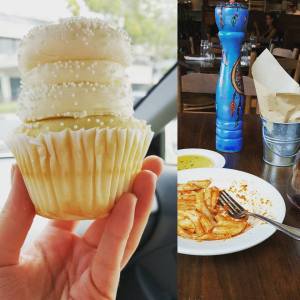 When my doctors couldn’t figure out what was wrong, I decided to
When my doctors couldn’t figure out what was wrong, I decided to 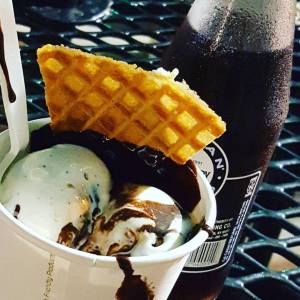

 My rheumatologist seemed even less concerned. Fatigue is associated with some autoimmune disorders and can come as a side-effect of the Remicade treatments. I spoke with his PA Anna, and she mentioned that some patients have seen positive results after changing their diets. While she couldn’t medically recommend a specific diet, she did tell me that many patients she (and many of her colleagues) spoke with reported lessened inflammation with certain dietary restrictions: no gluten, no dairy, no alcohol, no refined sugar, etc. I’d tried some of this before to no avail, so I packed that discussion into the back of my mind.
My rheumatologist seemed even less concerned. Fatigue is associated with some autoimmune disorders and can come as a side-effect of the Remicade treatments. I spoke with his PA Anna, and she mentioned that some patients have seen positive results after changing their diets. While she couldn’t medically recommend a specific diet, she did tell me that many patients she (and many of her colleagues) spoke with reported lessened inflammation with certain dietary restrictions: no gluten, no dairy, no alcohol, no refined sugar, etc. I’d tried some of this before to no avail, so I packed that discussion into the back of my mind.






